By Sean Duffy
In today’s modern fire environment, time is something we do not have. As we have learned through extensive research, our fires of today are now measured in seconds, not minutes! It is imperative that once we arrive on scene, we focus our efforts on where we can have the greatest impact. The term “360° size-up” in relation to gathering our information for tactical priorities is widely known. However, we must not just focus our efforts on the fire itself. It is human nature for our eyes to track toward movement and light. This can cause us to lose situational awareness of the overall incident. Think of this like taking a picture. To truly capture all the details, we would likely want to use a panoramic view. We should apply the same concept while performing a size-up.
- Searchable vs. Survivable: Educated Decision Making
- SEARCH IN THE MODERN ENVIRONMENT
- Podcast: In Their Own Words: Sean Duffy on Survivability and Search Ops
- Podcast: Generation Engine: Sean Duffy
Although the fire will tell us a lot about what is currently happening as well as what we can expect to happen, we must not lose focus on the importance of searchable space. Our objective in the search size-up is to decide where to initiate search and target areas where our victims are most likely to be found when able to do so. Our options with searchable space can be broken down into two distinct categories: We either create and maintain searchable space or we keep from losing the spaces we have. We must also decide if we are going to remove the victims from the environment first or if it’s best to remove the environment from the victims. In all those scenarios, it comes down to time, which we absolutely determine! So, I urge you to consider, What is an acceptable delay before we go in and rescue those trapped by fire, and how much time do we really have?
High-Target Areas for the Residential Primary Search
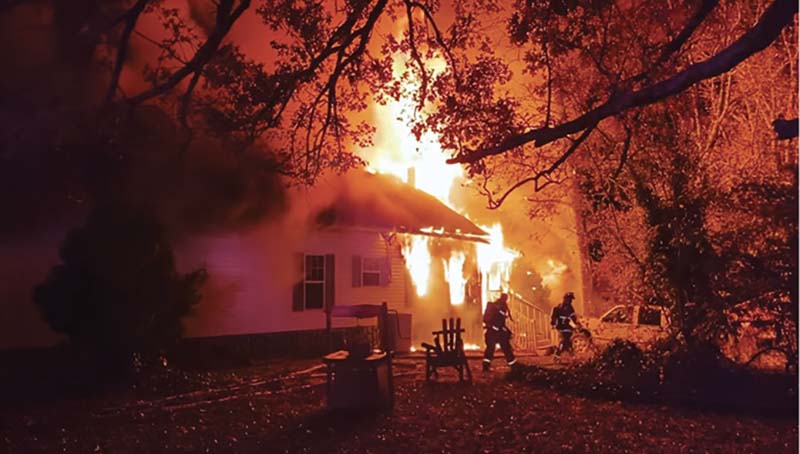
(1) A large body of fire is showing on arrival at a structure with plenty of searchable space. If we focus only on the fire before we prioritize search, we can miss the opportunity we have to locate and remove potential victims in a timely manner. (Photo by Daniel Purcell.)
Gather the Intel
Gathering intel for the search need not be complicated or daunting. Often, when we arrive, many clues present themselves that will allow us to be intelligently aggressive. The location of the fire and where we expect it to go as well as knowing what the smoke is telling us should aid our decision making when completing our size-up. Aside from reading smoke and fire behavior, we have to understand some of the data as it relates to search and other tactical priorities. According to Firefighterrescuesurvey.com, in 89 percent of all successful rescues, search was initiated before the fire was knocked down and yielded a 65-percent survival rate (based on the first 2,000 fireground surveys submitted). It also shows that we have an approximately eight-minute window from the time we arrive on scene to effect a rescue. Failure to do so within this time dramatically decreases the chance of survival for trapped occupants.
When performing a 360° size-up, pay special attention to the location of windows and whether they have high exhaust points; this can create space within the compartment where victims may still be viable. Window air-conditioning units represent an area where people wish to stay comfortable and can be a telltale sign that, while the space may not be one that is traditionally “occupied,” it can indeed have potential victims. In difficult economic times, people may convert places that are not normally meant for living into bedrooms or small apartments. You may find garages; sheds; attics; or, in some cases, parts of commercial buildings turned into living spaces.
Home modifications such as wheelchair ramps can also clue us in on a few things. In such situations, likely the front door is not the main entrance. Depending on the victim’s limitations, the home’s interior modifications may include the removal of doors to make navigating the home more practical. The living room may now be the primary location where wheelchair-bound victims reside. In some cases, furniture may block the front doors and make access nearly impossible. We should consider all such possibilities; entry problems not properly identified can become major egress problems.
Note that circular driveways may imply where our victims primarily enter and exit. We traditionally choose the front door as our pathway for fire attack and search, which can absolutely be the most efficient at times, but we also must consider the advantages of alternative entry points and the impact they can have on our success. Make every effort to look for opportunity, not security. When it comes to victims, our thought process should be that it is a probability, not a possibility!
Do not use any findings as an excuse for reckless behavior. There is a big difference between an aggressive firefighter and a dangerous one. The intent in sizing up our searches is to locate searchable space, not determine the chances of survivability. We are simply trying to get to our victims and remove them in the quickest way possible to increase their odds of survival. We want to be aggressive with our searches while making educated decisions based on proven tactics, backed with real-world data.
Plan and Control Our Actions
Our unprotected civilians have been exposed longer to toxic smoke and high temperatures, from before the time we were dispatched; every second wasted is a matter of life and death. Hence, our search is critical, and rapidly delivering our size-up information is paramount to implement the best tactics with the staffing levels we currently have on scene. The speed with which we initiate the primary search is what differentiates it from any other search and rescue operations that we may have to perform. Since the fireground can be very chaotic, we must exercise great discipline during our size-up to avoid bringing the chaos onto ourselves. If we do not plan or control our actions, they will quickly result in frantic movements that embody panic and spread chaos to those around us. We should carefully and systematically plan our search with whoever is leading the search effort.
Not Just an Exterior Operation
A search size-up is not just an exterior operation. It gives us a lot of clues and is a great starting point. However, we are unable to fully know the conditions of each interior room from the outside since we are only seeing what is occurring from a limited exterior view. Thus, we are only truly seeing a fraction of the big picture at any given moment in time. Keep in mind that the assignment of search has two objectives: locate fire and locate life. Once we make entry, we must continually size up the structure’s interior and its conditions once we make entry. One example of something we are unable to fully ascertain during the exterior size-up is the closure of interior doors. We may have some indications of this from the exterior but can truly confirm it only by completing a thorough search. The importance of confirmation: In 26 percent of rescues, victims were found behind closed doors; their survival rate was 82 percent, according to Firefighterrescuesurvey.com.
Size-Up Search in the Interior
During the search, focus on predictable behavioral patterns and the routes occupants may take while trying to exit. Human behavior during a fire tends to lead civilians directly toward the main routes of egress in their homes. Smoke and heat may easily overcome those unaware of the fire or who are trying to escape; such victims may be found on furniture, in their beds, or on the floor near windows and doors. Children in these circumstances tend to try and find a “safe place” such as under their beds or in closets. They may also hide in other spots like cabinets, blankets, and piles of clothing.
The United States Fire Administration reports that, at the time of their death, 31 percent of victims were trying to escape while 37 percent were found sleeping. Based on 2,000 actual fireground rescues, it was also found that 45 percent of the time, our victims were found in bedrooms, and their survival rate was 59 percent. Such data is instrumental in showing us to give bedrooms, hallways, and routes of egress high priority during search.

(2) At this commercial fire, an exterior view offered several clues indicating occupancy, such as the garden area and a parked vehicle.

(3) When the structure was entered, it was discovered that someone was living in the janitor’s closet. (Photos 2-3 by Chief Curt Isakson.)
Done properly, a size-up will result in not only rapid victim location but also removal (57 percent of victim removals took less than two minutes). Not using proper techniques from the moment we arrive will only increase the time it takes to locate and remove our civilians, ultimately decreasing their survival odds.
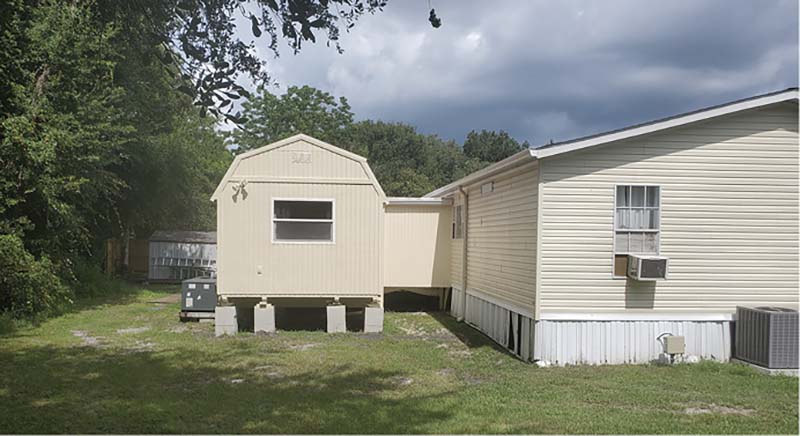
(4) Here, we can see a situation where the owners built onto the home and converted a shed into an area that now has two bedrooms and a bathroom for their children. (Photo by author.)
Successful Rescues Do Not Happen by Chance
Often, search is thought of as a single team performance objective. However, the size-up of the total area (square footage, number of floors, and building layout) to be searched should dictate how many crews are assigned to accomplish this objective. Other factors we need to consider are the crew’s ability and knowledge and how long it takes to formulate a plan and put it into action. All those things coupled together will set the stage for what happens to our victims. When looking at the impact our decisions can have on occupants, it is worth noting that there has been a 61-percent survival rate for all recorded rescues to date, thus proving that successful rescues do not happen by chance but rather are the result of diligently preparing for and seeking every opportunity afforded to us on the fireground.
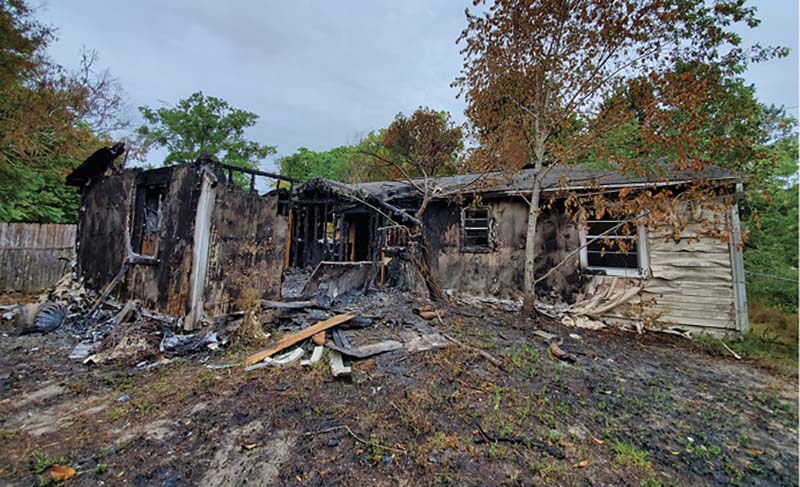
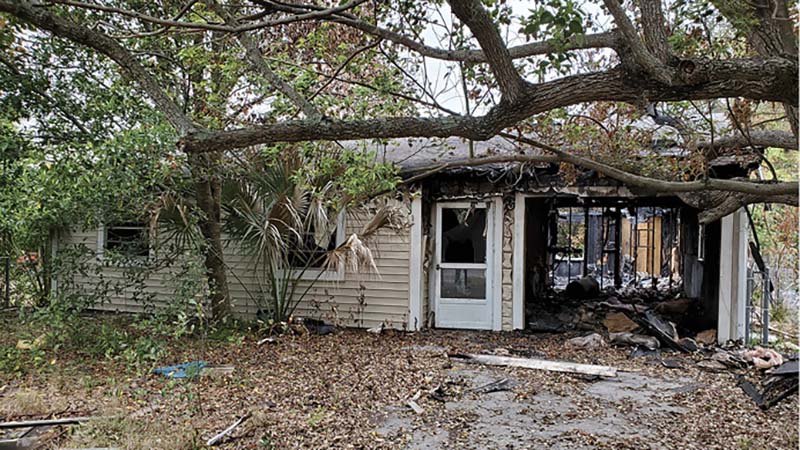
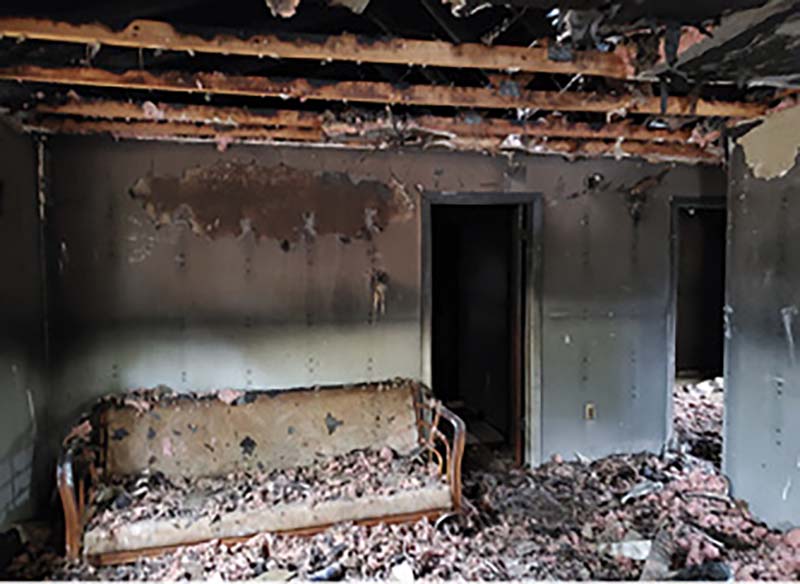
(5-7) The first-arriving unit reported the structure to be fully involved and initiated an exterior attack on the rear of the home. Further size-up revealed searchable space in the front of the structure. Supported by an interior line, the next-arriving company made entry for search, creating and maintaining searchable space. (Photos by author.)
The best lifesaving tactics on the fireground are a systematic search plan and rapid water on the fire with coordinated ventilation, which can all be accomplished by understanding the importance of using a prompt and appropriate size-up for both fire and civilian life.
References
Brush, Brian. “Final Report: 2021 Fireground Civilian Rescue Research Project.” www.Firefighternation.com. https://bit.ly/3FFhUS1.
Clackamas Fire District #1. Truck Company Manual, “Rescue & Search.” https://bit.ly/3a171OZ.
Firefighter Rescue Survey. www.Firefighterrescuesurvey.com.
Underwriters Laboratories Fire Safety Research Institute. “Study of Fire Service Residential Home Size-up and Search & Rescue Operations.” https://bit.ly/3l5LWFd.
United States Fire Administration. “U.S. Fire Statistics.” https://bit.ly/3w9sa1J.
Sean Duffy is a firefighter with the Ann Arbor (MI) Fire Department and a 17-year veteran of the fire service. He has an associate degree in fire science and has instructed locally and nationally. Duffy is a contributor to Fire Engineering, a co-founder of Build Your Culture, and an active F.O.O.L.S. member.

